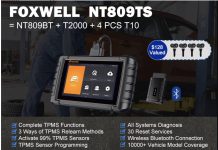It can be quite alarming to see an engine warning on your GMC Terrain’s dashboard, especially if you have never seen one before. Several issues can trigger check engine light, some more serious than others. In this piece, we will share the leading causes of 2011 GMC terrain engine lights, and the steps owners can follow when trying to DIY diagnose the problem.
Common causes of the check engine light
The check engine light on a GMC Terrain dashboard will either illuminate or blink depending on the vehicle’s make. A steady, continuous glow usually translates to a less severe problem. On the other hand, a flashing check engine light could mean your vehicle’s engine has a significant issue that should be resolved immediately. Regardless of the type of light you are getting from your car, it is advisable that you don’t drive the vehicle until it has been serviced by a professional. The following are some of the common reasons your check engine light comes on:
- Problems with aftermarket items: If an aftermarket item such as an alarm or exhaust is not installed correctly, it can cause extreme problems on your GMC Terrain. Faulty aftermarket parts and accessories usually drain the battery to trigger the check engine light.
- Damaged Oxygen Sensor: The Oxygen Sensor or O2 Sensor is an accessory that helps measure the amount of oxygen in your exhaust system. When too much oxygen is in your exhaust system, fuel burns quickly, meaning you get inefficient fuel economy. A damaged sensor impacts your miles per gallon and damages the GMC Terrain’s catalytic converter and spark plugs. In such a situation, the O2 Sensor transmits data to your vehicle’s onboard computer to establish the right mixture of fuel and air entering the GMC engines cylinders.
- Low or dead battery: The battery in your GMC Terrain is a crucial component that ensures your vehicle starts. It also provides power to the vehicle’s lights and other essential items. If your vehicle’s battery is low or dead, you may get the check engine light on the dashboard.
- A loose, missing, or broken gas cap: Another major cause of check engine terrain in GMC Terrain is a loose, missing, or broken gas cap. The gas gap seals the fuel system and helps maintain pressure within the fuel tank, thereby preventing hazardous gas fumes from being released when the vehicle is parked.
- A broken catalytic converter: The catalytic converter is an integral part of a GMC Terrain’s exhaust system. The catalytic converter helps turn carbon monoxide from the combustion process into carbon dioxide. A broken catalytic converter may negatively impact your engine performance and your fuel economy. This problem is mainly caused by inadequate or lack of maintenance.
DIY check engine light diagnosis steps
As mentioned earlier, the reasons for the “check engine light” on your GMC Terrain are vast and involve hundreds of potential codes on the onboard computers. The diagnostic trouble code (DTC) is the code your OBD generates to alert you when something is wrong with your vehicle. The DTC comprises a series of five letters and numbers that allows you to determine the exact vehicle system or component malfunctioning. For example, if your OBD detects a leak in the vehicle’s evaporative emission system, you may see a P0442 code.
It is possible to DIY diagnose the cause of the check engine light yourself. All you need to determine the cause of the light is an 0BD-II scan tool. The OBD-II scan tool is a device designed to pull codes that help you determine the issue with your vehicle. The following are the steps to determine the cause of the check engine light on your GMC Terrain:
- Find the OBD port in your vehicle: The OBD port is typically located under the driver’s side of the dashboard near the pedals. It should be within 3 feet of the steering wheel and doesn’t require tools to access it.
- Fix the OBD scanner to the connector: The OBD scan tool comes with a male end that fits seamlessly into the car’s connector in the OBD port. Once the OBD scan tool is perfectly plugged in, it powers up to enable you to read the information on the display.
- Read codes on the computer: On the tool’s display, you will receive several headings. Navigate to a heading called “Read Codes” and select it.
- Record the codes that display: Write down the codes displayed on the scanner. Where there are multiple codes, ensure you write them down in the same order it is displayed.
Interpreting the OBD codes
OBD codes may seem complex. However, interpreting them correctly can help you identify the general cause of your lit check engine light, so you take appropriate steps. The following are the steps to interpreting the OBD codes:
- Break down the codes into sections: Codes have different sections comprising letters and numbers:
- The first section is the first character made up of a letter.
- The second section is the next character made up of a single number from 0 to 3.
- The third section is the third character made up of a single number from 0 to 9.
- The fourth section comprises both the fourth and fifth characters combined. It is a pair of numbers from 00 to 99.
- Determine the meaning of the letter: There are four letters typically shown in the first section of the code:
- The letter “P” is specific to powertrain codes particular to the 2011 GMC Terrain transmission or engine sensors. The “P” codes are the main codes that trigger the check engine light.
- The letter “B” indicates a body code related to a body system like the airbags.
- The letter “C” indicates a chassis code for systems like anti-lock brakes.
- The letter “U” refers to the network codes used for faults such as a breakdown in communication and module failures.
- Determine whether the codes are manufacturer-specific or the Society of Automotive Engineers (SAE): Read the first number in the sequence following the last letter code to determine the specificity of the code. SAE codes are typically the generic codes used in all models and make. SAE codes use “0” as the second digit. The manufacturer-specific codes use other numbers other than “0” as the second digit. In a nutshell, codes beginning with P0 are generally generic codes related to GMC Terrain engine powertrain and GMC Terrain engine power reduced issues, while those beginning with P1 are manufacturer specific.
- Determine the system code that applies: The third number in the sequence refers to the faulty system:
- A “1” refers to an air metering issue like a faulty mass air flow sensor
- A “2” indicates a fuel or air metering injection system problem, such as a fuel injector issue
- A “3” shows ignition-related issues like a GMC Terrain 2011 engine misfire
- A “4” indicates an emissions system problem such as a catalytic converter efficiency issue.
- A “5” refers to issues with vehicle speed controls or idle control system
- A “6” indicates computer circuit issues such as internal computer failure.
- “7”, “8”, or “9” all refer to transmission-related issues such as sensor failure.
- Find out the exact fault: The last two numbers on the scan tool display describe the specific fault. Use online resources and platforms like the OBD-Code’s website to decipher the specific fault affecting your vehicle.
Key Takeaway
A GMC Terrain check engine light can be due to a simple issue such as tightening or replacing your gas cap. However, the light could also be related to a significant problem that may damage your vehicle’s engine and other crucial systems. Once you have diagnosed the problem, schedule service as soon as possible.










